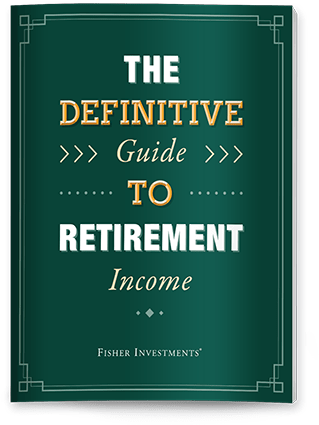Personal Wealth Management / In The News
What Thanksgiving Dinner Says About Prices Today
Some takeaways on the recent price estimates for Thursday’s big meal.
Gobble gobble, it is Thanksgiving week, and the annual report on turkey meal prices is here! As families and friends across America prepare for a Thanksgiving feast this Thursday, here are three lessons your meal can—and can’t—teach you about prices today.
One Price Isn’t a Trend
Yes, many headlines have pointed out Thanksgiving dinner “will cost a little less this year.”[i] According to the American Farm Bureau Federation, the price for a “classic” Thanksgiving dinner for 10 people will average $55.18 (around $5.52 a person).[ii] That is -5% lower than last year and nearly $9 cheaper than 2022’s record high of $64.05.[iii] Wells Fargo reported a “typical” Thanksgiving dinner is down -2% to -3% from 2024.[iv] But some analysts have astutely pointed out food prices overall have continued rising despite lower turkey prices—so Americans aren’t enjoying much relief.[v]
Both statements can be true. Individual prices rise and fall depending on their supply and demand drivers. Today’s turkey prices, for example, reflect some unique factors (more on this later). But broad inflation rates reflect many goods and services. The Bureau of Labor Statistics (BLS), for instance, tracks the prices of around 80,000 items each month for its consumer price index (CPI).[vi] On the “food at home” front, the BLS monitors the prices of cereals and bakery products, several proteins (e.g., meat, poultry, fish and eggs), dairy, fruits and vegetables and various beverages. Beef, coffee and canned fruit are still rising, among others (more on this shortly, too).[vii] When taking all these items in aggregate, US food prices are rising despite turkey’s deflation. But this doesn’t mean your personal food bill will be higher or lower, which brings us to the next lesson.
National Averages May Not Match Your Personal Situation
People often discuss prices in broad terms, as if everyone pays the same amount for similar goods and services. But national measures like CPI aren’t (and don’t strive to be) cost-of-living measures—as evidenced by the Thanksgiving meal.
Per the Farm Bureau, the price for its “classic” Thanksgiving meal varies regionally. The West pays most ($61.75), followed by the Northeast ($60.82), Midwest ($54.35) and the South ($50.01). Those price differences can reflect myriad factors, including production, transportation and labor costs.[viii]
Then, too, what you pay will depend on what you are eating this Thanksgiving. Not every household serves (or wants) a turkey. Some may prefer smoked brisket or steak instead—and that means having to swallow record-high beef prices.[ix] Your sides and dessert may also vary.
Your costs probably won’t match your neighbor’s, just as CPI might heavily weight things you don’t consume much of and underweight things that loom large in your budget. Take care not to compare without context.
Local Developments’ Outsized Effect on Individual Prices
Looking under the hood can reveal a lot about why some prices are higher or lower. Let’s go back to turkey. Despite an outbreak of avian flu that resulted in the (sad) culling of two million birds since September, the hit to Thanksgiving supply has been minimal. Most turkeys earmarked for Thursday’s meals were in cold storage well before the outbreak.[x] Supermarkets also tend to use the Thanksgiving turkey as a “loss leader,” meaning it is an item aimed at getting customers to the store to buy other goods.[xi] Also, despite being synonymous with Thanksgiving, turkey demand in general has been falling for years—another reason turkey prices aren’t elevated.[xii]
Other foods cost more because of external events. According to the Farm Bureau, sweet potatoes are up 37% due to hurricane damage in North Carolina, which produces more than half of the nation’s crop.[xiii] Similarly, jellied cranberry sauce cost more than a year ago, according to research outfit Datasembly—perhaps partly due to tariffs, as steel duties drove up canning costs, but also because of drought in Massachusetts affecting cranberry production.[xiv]
We get that lower average turkey feast prices are perhaps cold comfort, given they don’t represent prices falling more broadly. Living costs, overall, remain elevated. But bear in mind America doesn’t do deflation well. Getting overall prices back to prepandemic levels would require deep deflation, which is usually a side effect of a big, nasty recession and severe credit crunch. In modern history, the only analogue is the Great Depression—not a good time for most households. As frustrating as higher prices are, the alternative would be worse, in our view. Wage growth catching up to broad prices, which has been the US’s story for a while, is the beneficial outcome.
[i] “Give Thanks for the Discounts: The Feast Will Cost a Little Less This Year,” Scott Horsley, NPR, 11/24/2025.
[ii] “Cost of Thanksgiving Dinner Declines,” AFBF Staff, American Farm Bureau Federation, 11/19/2025.
[iii] Ibid.
[iv] “Wells Fargo Thanksgiving Food Report,” Dr. Michael Swanson, Robin Wenzel and Courtney Schmidt, Wells Fargo, November 2025.
[v] “Your Turkey Is Cheaper This Thanksgiving. That’s About It.” Justin Fox, Bloomberg, 11/25/2025.
[vi] Source: Bureau of Labor Statistics, as of 9/25/2025.
[vii] Source: FactSet, as of 11/25/2025.
[viii] See note i.
[ix] “Beef Prices Are Close to Record Highs—but Americans Aren’t Cutting Back,” Amanda Macias, Fox Business, 11/23/2025.
[x] See note v.
[xi] Ibid.
[xii] Ibid.
[xiii] “”Thanksgiving Dinner Cost Analysis: Moderate Decline,” Faith Parum and Samantha Ayoub, American Farm Bureau Federation, 11/19/2025.
[xiv] “Stores Keep Prices Down in a Tough Year for Turkeys. Other Thanksgiving Foods May Cost More,” Dee-Ann Durbin, Associated Press, 11/24/2025.
If you would like to contact the editors responsible for this article, please message MarketMinder directly.
*The content contained in this article represents only the opinions and viewpoints of the Fisher Investments editorial staff.
Get a weekly roundup of our market insights
Sign up for our weekly e-mail newsletter.

See Our Investment Guides
The world of investing can seem like a giant maze. Fisher Investments has developed several informational and educational guides tackling a variety of investing topics.




